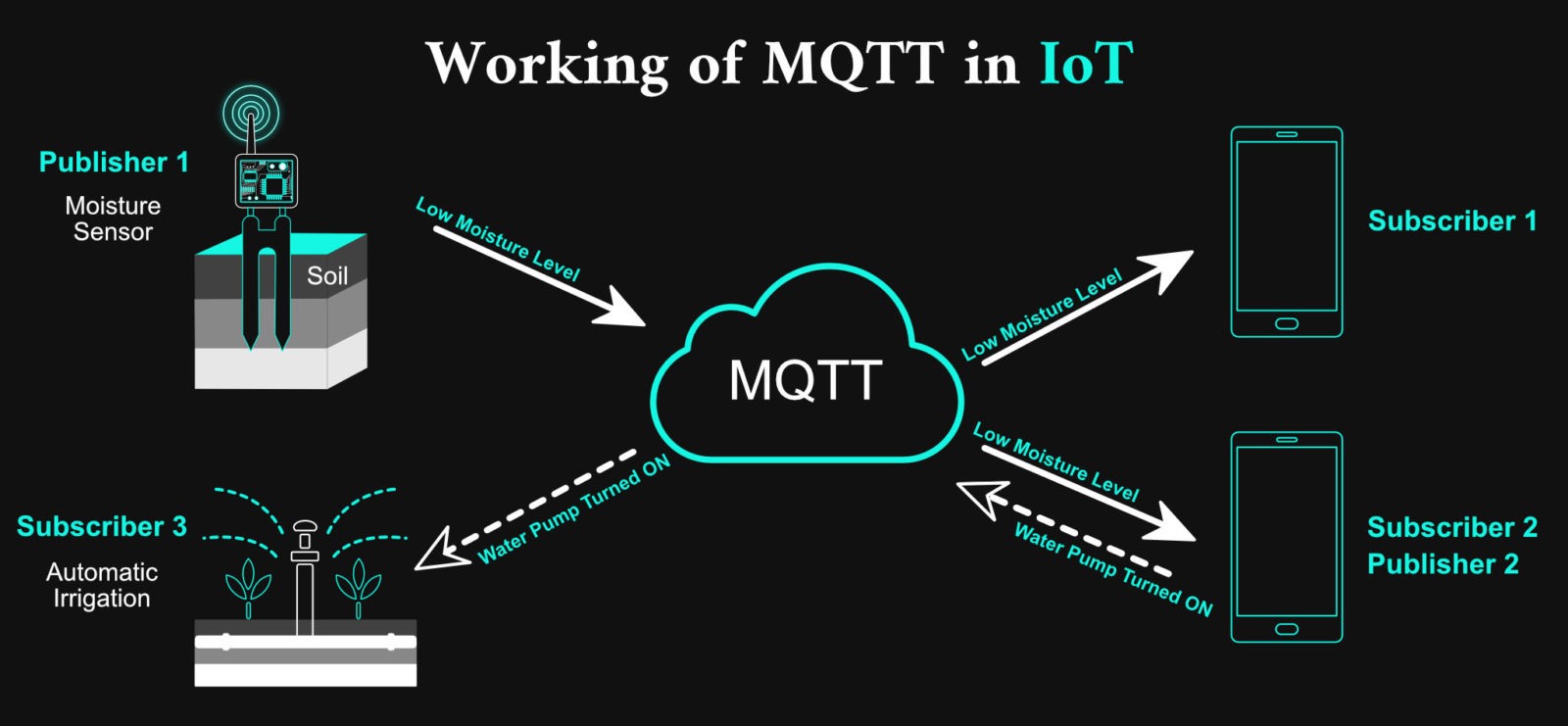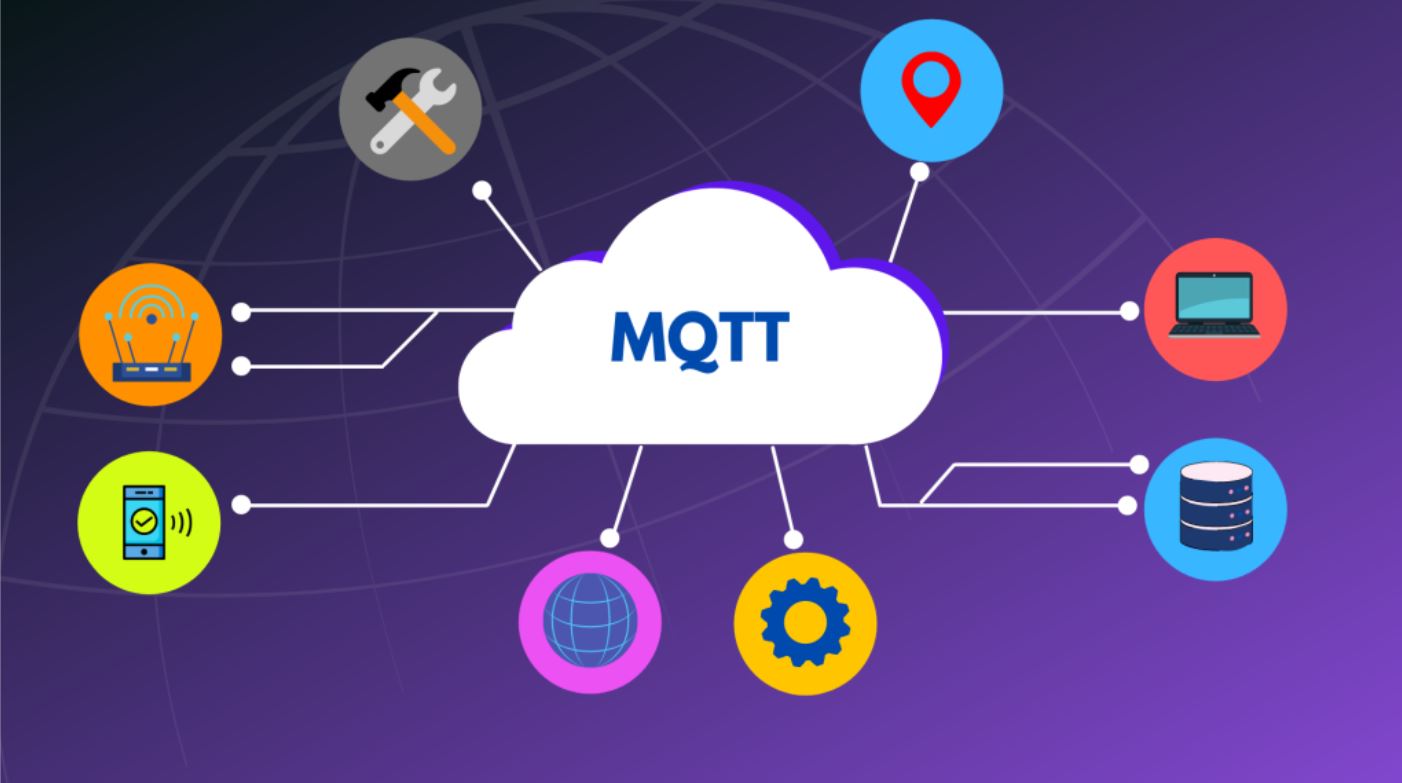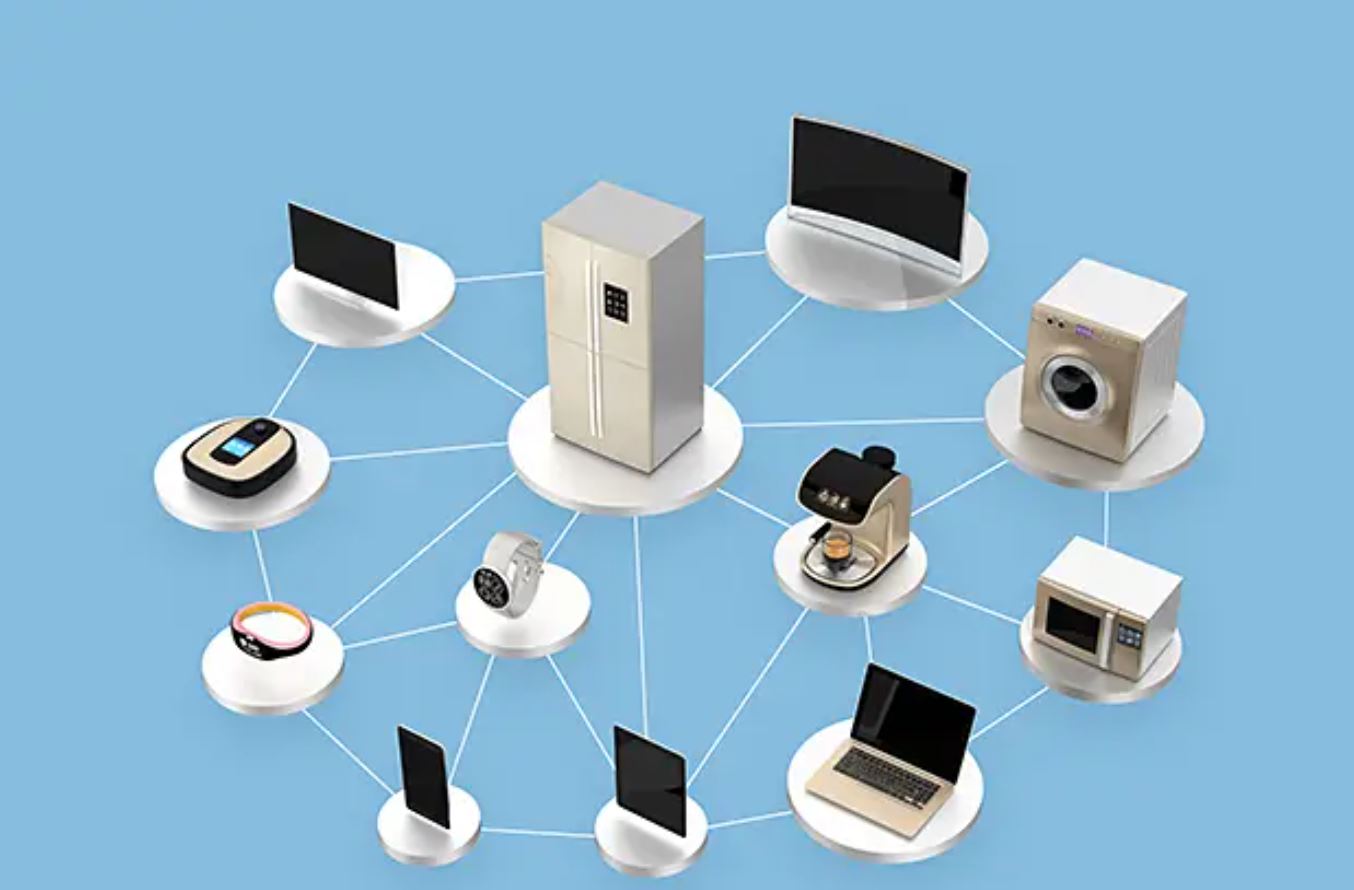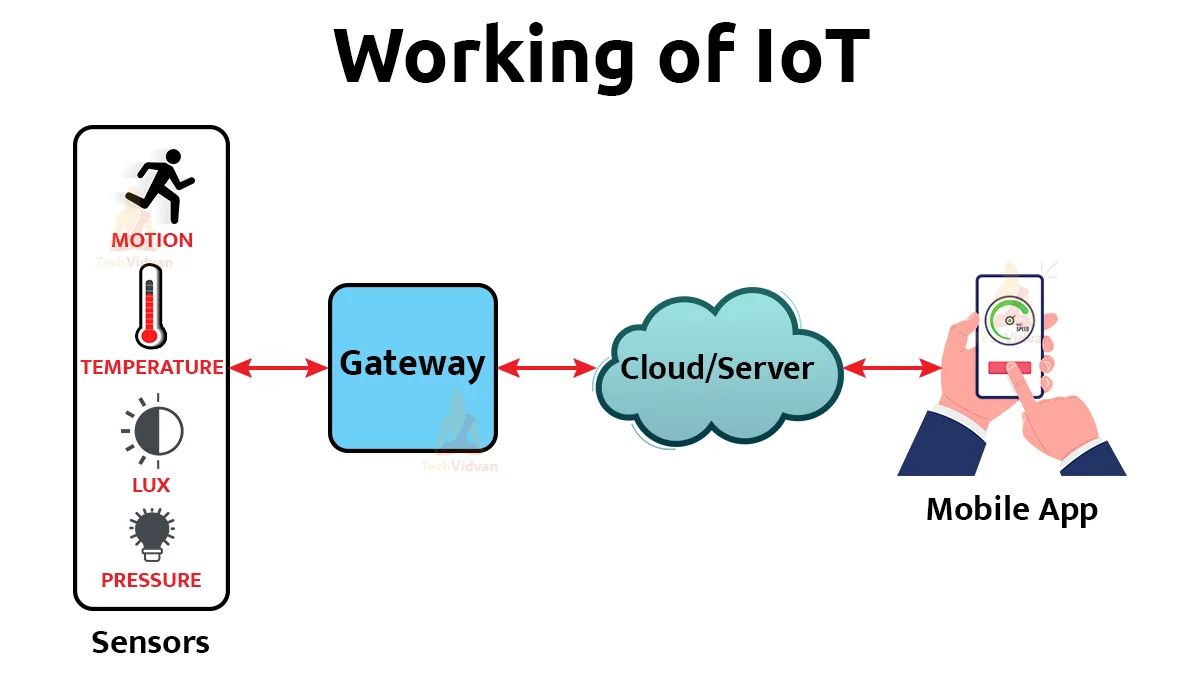Introduction
The Internet of Things (IoT) has revolutionized our world by interconnecting devices and enabling seamless communication between them. One crucial aspect of IoT is the efficient transfer of data between devices, and this is where the MQTT protocol comes into play.
MQTT, which stands for Message Queuing Telemetry Transport, is a lightweight messaging protocol designed specifically for IoT devices. It was developed in the late 1990s by Dr. Andy Stanford-Clark of IBM and Arlen Nipper of Cirrus Link Solutions. MQTT provides a reliable and efficient solution for the transmission of data in resource-constrained environments.
The MQTT protocol is built upon a publish-subscribe architecture, where a publisher sends data to a broker, which then delivers the data to all subscribed clients. Unlike traditional request-response protocols, MQTT decouples the sender and receiver, allowing for asynchronous communication and minimizing network bandwidth usage.
The popularity of the MQTT protocol can be attributed to its simplicity, scalability, and suitability for low-power devices. It has gained widespread adoption in various industries, including home automation, industrial automation, agriculture, and healthcare.
In this article, we will explore the fundamentals of the MQTT protocol, understand how it works, discuss its components, and highlight its key features. We will also delve into the advantages and limitations of using the MQTT protocol in IoT scenarios. By the end, you will have a clear understanding of how MQTT facilitates efficient data transfer in the IoT ecosystem.
What is MQTT Protocol?
The MQTT protocol is a lightweight messaging protocol designed for the efficient transfer of data between devices in IoT environments. It utilizes a publish-subscribe pattern, where publishers send messages to a broker, which then delivers those messages to all subscribed clients.
Unlike traditional protocols that rely on request-response communication, MQTT operates in an asynchronous manner, allowing for efficient and real-time data transmission. It is particularly well-suited for constrained devices and low-bandwidth networks, making it an ideal choice for IoT applications.
One of the key principles of MQTT is its lightweight nature. The protocol is designed to have minimal overhead, requiring little memory and processing power, which is crucial for resource-constrained devices such as sensors or actuators.
The MQTT protocol operates on a publish-subscribe model, where devices can publish messages to a specific topic. These topics act as channels or categories through which messages are routed. Any device that subscribes to a specific topic will receive all the messages published on that topic.
In addition to the publish-subscribe model, MQTT supports Quality of Service (QoS) levels for varying degrees of reliability in message delivery. There are three levels of QoS: QoS 0 (at most once delivery), QoS 1 (at least once delivery), and QoS 2 (exactly once delivery). This flexibility allows developers to choose the appropriate level of reliability for their application’s needs.
The MQTT protocol uses a lightweight header and a variable-length payload for data transmission. This efficient packet structure minimizes the network bandwidth required and reduces the overall latency, making it suitable for real-time IoT applications.
Overall, the MQTT protocol is designed to be simple, efficient, and adaptable, making it an ideal choice for IoT communication. Its lightweight nature, combined with the publish-subscribe model and support for different QoS levels, makes it a versatile protocol for a wide range of IoT applications.
How Does MQTT Work?
The MQTT protocol operates on a client-server architecture, with three main components involved: clients, brokers, and topics.
Clients in MQTT can be both publishers and subscribers. A publisher client sends messages to a broker, while a subscriber client receives messages from the broker. Clients connect to the broker using a unique client identifier, which allows the broker to identify and route messages to the appropriate clients.
The MQTT broker acts as a central hub for message exchange. It receives messages from publishers and forwards them to the relevant subscribers. The broker is responsible for managing client connections, handling subscriptions, and ensuring the reliable delivery of messages.
Topics are the channels through which messages are published and subscribed to in MQTT. Topics act as a hierarchical structure, allowing for organization and efficient routing of messages. Publishers specify the topic under which their messages are published, and subscribers subscribe to specific topics to receive relevant messages.
When a publisher client wants to send a message, it publishes the message to a specific topic on the broker. The broker then forwards the message to all subscribers who have subscribed to that topic. Subscribers receive the message and can take appropriate actions based on the received data.
MQTT also supports different Quality of Service (QoS) levels to ensure reliable message delivery. In QoS level 0, messages are delivered at most once, where no acknowledgment or acknowledgment retries are performed. It is the fastest but least reliable QoS level. QoS level 1 ensures at least once delivery, where messages are acknowledged by the receiving client. If an acknowledgment is not received, the publisher sends the message again. QoS level 2 provides exactly once delivery by using a four-step handshake process between the publisher, broker, and subscriber.
In addition to the basic publish-subscribe mechanism, MQTT also supports additional features such as Last Will and Testament (LWT) and message retention. LWT allows clients to specify a message that will be automatically published by the broker if the client disconnects unexpectedly. Message retention ensures that subscribers receive the most recent messages even if they join the system after the message has been published.
Overall, MQTT’s publish-subscribe architecture, coupled with its topic-based messaging, enables efficient and scalable communication in IoT environments. Its support for different QoS levels and additional features make it a reliable and flexible protocol for various IoT applications.
MQTT Protocol Components
The MQTT protocol consists of several key components that work together to enable seamless communication between devices in IoT environments.
1. Publisher: The publisher is a client application that produces and sends messages to the broker. It connects to the broker and publishes messages to specific topics, which act as channels for message transmission.
2. Subscriber: The subscriber is a client application that receives messages from the broker. It connects to the broker and subscribes to specific topics of interest. The subscriber will receive all messages published on the subscribed topics.
3. Broker: The broker is the central intermediary in the MQTT network. It receives messages from publishers and forwards them to the appropriate subscribers based on topic subscriptions. The broker manages client connections, handles message routing, and ensures reliable message delivery.
4. Topics: Topics act as channels or categories through which messages are routed in MQTT. They provide a hierarchical structure that enables efficient organization and filtering of messages. Publishers specify the topic under which their messages should be published, and subscribers subscribe to specific topics to receive relevant messages.
5. Quality of Service (QoS) Levels: MQTT supports three levels of QoS to ensure the reliable delivery of messages. QoS 0 guarantees at most once delivery, where messages may be lost or duplicated. QoS 1 ensures at least once delivery, where messages are acknowledged by the receiver, and retransmission is performed if necessary. QoS 2 provides exactly once delivery using a four-step handshake process.
6. Session State: MQTT maintains a session state between the broker and clients. This session state includes information such as client subscriptions, QoS levels, and in-flight messages. It allows clients to smoothly resume communication with the broker after a disconnection.
7. Retained Messages: MQTT supports retained messages, which are messages that the broker stores and delivers to new subscribers. A retained message is associated with a specific topic and will be sent to any new subscriber that subscribes to that topic. This ensures that subscribers receive the most recent information, even if they join the system after the message has been published.
8. Last Will and Testament (LWT): MQTT allows clients to define a last will and testament message. This message is automatically published by the broker if the client disconnects unexpectedly. It allows other clients to be informed about the sudden disconnection or unavailability of a client.
These components form the foundation of the MQTT protocol and work together to establish a reliable and efficient communication system in IoT environments. By leveraging these components, MQTT enables seamless data exchange between publishers and subscribers, facilitating real-time monitoring, control, and coordination of IoT devices.
Features of MQTT Protocol
The MQTT protocol offers several key features that make it a popular choice for IoT communication:
1. Lightweight and Efficient: MQTT is designed to be lightweight, making it ideal for resource-constrained devices and networks. The protocol has minimal overhead, requiring less memory, processing power, and network bandwidth compared to other communication protocols. This efficiency allows MQTT to operate effectively on low-power devices with limited resources.
2. Publish-Subscribe Architecture: MQTT follows a publish-subscribe model, where publishers send messages to a broker, and subscribers receive those messages from the broker. This asynchronous communication pattern ensures flexibility and scalability in IoT systems, as multiple publishers can send messages to a single topic, and multiple subscribers can receive messages from the same topic.
3. QoS Levels: MQTT supports different levels of Quality of Service (QoS) to ensure reliable message delivery. The three levels are QoS 0, QoS 1, and QoS 2. QoS 0 provides at most once delivery, where messages may be lost or duplicated. QoS 1 ensures at least once delivery by acknowledging the receipt of messages. QoS 2 provides exactly once delivery using a four-step handshake process. This flexibility allows developers to choose the appropriate QoS level based on the reliability requirements of their application.
4. Message Retention: MQTT supports retained messages, which are messages that the broker stores and delivers to new subscribers. When a message is published with the “retain” flag set, the broker saves that message and delivers it to any new subscriber who subscribes to that topic. This feature ensures that subscribers receive the most recent information, even if they join the system after the message has been published.
5. Session State: MQTT maintains a session state between clients and the broker. This session state includes client subscriptions, QoS levels, and in-flight messages. It allows clients to seamlessly reconnect to the broker after a disconnection, resuming communication without losing any messages or subscriptions.
6. Scalability and Flexibility: MQTT is highly scalable and can handle a large number of devices and messages. It supports hierarchical topic structures, allowing for efficient organization and filtering of messages. Additionally, MQTT can operate over various network protocols and transport layers, making it versatile and adaptable to different network environments and device configurations.
7. Security Features: MQTT provides security features to protect data transmission in IoT environments. It supports Transport Layer Security (TLS) encryption for secure communication between clients and brokers. MQTT also offers authentication mechanisms such as username/password authentication, client certificate-based authentication, and access control lists (ACLs) to restrict access to specific topics or actions.
These features collectively make MQTT a suitable choice for IoT communication, enabling efficient, reliable, and secure data transfer between devices in diverse IoT applications.
Advantages of MQTT Protocol in IoT
The MQTT protocol offers several advantages that make it an ideal choice for communication in IoT environments:
1. Efficiency in Resource Usage: MQTT is designed to be lightweight and efficient, making it suitable for resource-constrained devices with limited memory, processing power, and bandwidth. The protocol minimizes data transmission and processing overhead, resulting in reduced energy consumption and extended battery life for IoT devices.
2. Asynchronous Communication: MQTT follows a publish-subscribe model, allowing asynchronous communication between devices. This decoupling of sender and receiver enables efficient and scalable data transfer, as publishers and subscribers do not need to be simultaneously available. Data can be published and consumed at different times, allowing for real-time updates and improved system responsiveness.
3. Scalability: MQTT is highly scalable and can handle a large number of devices and messages. Its lightweight nature, combined with the publish-subscribe architecture, facilitates easy integration and communication between various types of IoT devices. MQTT brokers can handle thousands of clients and support millions of messages, making it suitable for scalable IoT deployments.
4. Flexible QoS Levels: MQTT supports different levels of Quality of Service (QoS) to ensure reliable message delivery based on application requirements. Developers can choose the appropriate QoS level for each message, balancing the trade-off between message delivery reliability and network bandwidth usage. This flexibility allows for efficient transmission of critical data while conserving network resources.
5. Reliability: With its support for QoS levels, MQTT ensures the reliable delivery of data in IoT applications. QoS 1 and QoS 2 provide mechanisms for acknowledging message receipt and retransmission, minimizing the chances of message loss or duplication. This reliability is crucial in scenarios where accurate and timely data transmission is vital, such as remote monitoring and control systems.
6. Low Bandwidth Consumption: MQTT’s lightweight design and efficient packet structure result in minimal network bandwidth consumption. The protocol minimizes the size of the header and payload, reducing the data exchanged between devices. This low bandwidth usage is particularly advantageous in IoT deployments with limited network connectivity or costly data plans.
7. Security: MQTT provides built-in security features to protect data transmission in IoT environments. It supports encryption through Transport Layer Security (TLS), ensuring secure communication channels between clients and brokers. Additionally, MQTT offers authentication mechanisms such as username/password authentication and client certificate-based authentication, along with access control lists (ACLs) to control access to specific topics or actions. These security features help safeguard IoT systems against unauthorized access and data breaches.
Overall, the MQTT protocol offers significant advantages for communication in IoT applications, including efficient resource usage, asynchronous communication, scalability, reliability, low bandwidth consumption, and built-in security features. These benefits make MQTT a popular and effective choice for connecting and exchanging data between IoT devices in diverse IoT deployments.
Limitations of MQTT Protocol in IoT
While the MQTT protocol offers many advantages, it also has certain limitations that need to be considered for IoT deployments:
1. Limited Support for Large Payloads: MQTT is primarily designed for small data payloads, typically in the order of kilobytes. It may not be suitable for scenarios requiring the transmission of large files or multimedia content. For such use cases, alternative protocols that specialize in handling larger payloads, such as MQTT-SN or HTTP, may be more appropriate.
2. Centralized Broker Dependency: MQTT relies on a central broker for message routing and delivery. In some IoT deployments, relying on a centralized infrastructure can introduce dependencies and potential points of failure. If the broker goes down, communication between devices can be disrupted. To mitigate this limitation, redundant or distributed broker architectures can be implemented to improve availability and fault tolerance.
3. Limited Bandwidth Management: While MQTT minimizes network bandwidth usage through its lightweight protocol design, it does not provide built-in mechanisms for managing bandwidth congestion. In scenarios with limited bandwidth or unreliable network connections, it may be necessary to implement additional measures, such as traffic shaping or prioritization mechanisms, to ensure efficient utilization of network resources.
4. Lack of Built-in Device Discovery: MQTT does not include a standardized mechanism for device discovery. In large-scale IoT deployments, discovering and identifying devices within the network can be challenging. Developers may need to implement custom discovery mechanisms or utilize additional protocols, such as mDNS (Multicast DNS) or SSDP (Simple Service Discovery Protocol), to enable device discovery and registration in MQTT-based systems.
5. Security Configuration Complexity: While MQTT provides built-in security features, the configuration and management of security aspects can be complex and require careful attention. Setting up secure communication channels, managing certificates, and implementing access control policies may involve additional effort and expertise. Proper security practices need to be followed to ensure the integrity, confidentiality, and authenticity of data transmitted through MQTT.
6. Lack of Standardization: While MQTT is an open standard protocol, there are multiple versions available, including MQTT v3.1 and MQTT v5. Some features and capabilities may vary between versions and different broker implementations. It is important to ensure compatibility and consistency across devices and brokers by using consistent protocol versions and understanding the specific features supported by the chosen MQTT implementation.
7. Reliability in Unreliable Networks: While MQTT supports reliable message delivery through different QoS levels, it can still face challenges in highly unreliable or intermittent network conditions. Factors such as network latency, packet loss, and disrupted connections can affect the reliability of message delivery. Proper testing and evaluation of MQTT’s behavior in specific network environments are necessary to ensure reliable communication in such scenarios.
By being aware of these limitations, IoT system designers and developers can appropriately plan and address any potential challenges while implementing MQTT-based solutions. Understanding the specific needs and constraints of the IoT deployment will help in leveraging MQTT effectively while mitigating its limitations.
Conclusion
MQTT, the Message Queuing Telemetry Transport protocol, is a lightweight and efficient messaging protocol that has emerged as a popular choice for communication in IoT environments. Its publish-subscribe architecture, scalability, and support for different Quality of Service (QoS) levels make it well-suited for a wide range of IoT applications.
In this article, we explored the fundamentals of the MQTT protocol and how it works. We discussed its key components, including publishers, subscribers, brokers, and topics. We also highlighted the features of MQTT that contribute to its effectiveness in IoT, such as its lightweight and efficient design, asynchronous communication model, and flexibility in QoS levels.
Additionally, we examined the advantages offered by MQTT, including its efficiency in resource usage, scalability, reliability, low bandwidth consumption, and built-in security features. We also acknowledged the limitations of MQTT, such as its limitations in handling large payloads, dependency on centralized brokers, and complexity in security configuration.
Despite its limitations, MQTT remains a widely adopted and valuable protocol for IoT communication. It plays a crucial role in enabling seamless data transfer, real-time monitoring, and coordination of IoT devices in various industries, including home automation, industrial automation, agriculture, and healthcare.
As IoT continues to grow and evolve, understanding the capabilities and limitations of MQTT, along with best practices and proper configuration, is essential for successful implementation and deployment of IoT solutions. By leveraging the strengths of MQTT and addressing its limitations, developers can build robust and efficient IoT systems that enable smart and interconnected devices to drive the future of technology.

























